Ropa interior sin costura versus unida: una opción estratégica para las marcas
Elegir la tecnología de producción de ropa interior correcta es crucial para el éxito de la marca. Entre las muchas opciones, las tecnologías de ropa interior perfecta y vinculada tienen sus ventajas, pero tomar la decisión incorrecta puede conducir a costos desperdiciados, problemas de calidad y una mala respuesta al mercado.
La elección entre la tecnología de ropa interior perfecta o vinculada depende principalmente del posicionamiento del producto, el mercado objetivo y los requisitos de rendimiento. La ropa interior sin problemas sobresale con su producción y comodidad automatizadas a costos más bajos, mientras que la ropa interior unida ofrece ventajas en invisibilidad, ajuste del cuerpo y apariencia premium, aunque a un precio más alto.
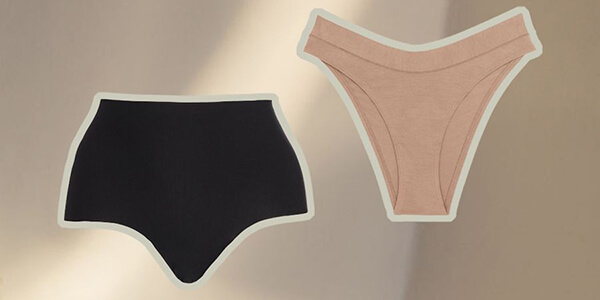
La tecnología de fabricación de ropa interior ha sufrido cambios tremendos en los últimos años. Una vez, la costura tradicional era la única opción, pero ahora las tecnologías sin costuras y unidas ocupan posiciones importantes en los mercados de alta gama y de rango medio. Como fabricante de ropa interior, he sido testigo de primera mano cómo estas tecnologías han remodelado el mercado y han visto la confusión que enfrentan muchas marcas al elegir el mejor enfoque tecnológico. Déjame guiarte a través de las características y diferencias de estas dos tecnologías.
Tecnología de ropa interior sin problemas: ¿Cómo funciona realmente?
En la industria de la ropa interior, los procesos de producción determinan la calidad y el costo del producto. Aunque la ropa interior perfecta es un término común, su complejo proceso de producción a menudo se malinterpreta, lo que lleva a sesgos en las decisiones de adquisición de marca.
La ropa interior sin costura (también llamada SeamFree) se crea principalmente utilizando máquinas de tejer circular especializadas que producen un tubo de tela en una operación, eliminando la necesidad de costuras laterales. Este proceso reduce significativamente las costuras, mejora la comodidad y logra un mayor grado de producción automatizada, reduciendo así los costos laborales.

Cuando ingresé por primera vez a la industria de la ropa interior, también tenía conceptos erróneos sobre la tecnología perfecta. Muchas personas creen que la ropa interior sin problemas no tiene costuras en absoluto, pero en realidad, mientras que la estructura principal es perfecta, áreas como la cintura y las aberturas de las piernas aún requieren procesamiento y costura posteriores. Comprender esto es muy importante para las marcas al comunicarse con los proveedores.
La tecnología de la máquina de tejer circular está en el núcleo de la producción de ropa interior sin costuras. Estas máquinas pueden tejer una estructura principal de ropa interior completa en una operación de acuerdo con los programas preestablecidos, simplificando enormemente los procesos tradicionales de corte y costura. Al tener, utilizamos equipos italianos de Santoni y Neri coreano: estas máquinas circulares de primer nivel pueden producir productos sin costuras extremadamente finos.
Proceso de producción de ropa interior sin problemas
| Etapa de producción | Descripción del proceso |
|---|---|
| Preparación de material | Selección de hilos adecuados para tejer a máquina circular, como nylon, algodón, hilo elástico, etc. |
| Tejido circular | La máquina circular controlada por computadora teje el tubo de tela en una operación |
| Teñido y acabado | Teñido y forma de forma de los tubos de punto |
| Corte | Cortar los tubos en las formas requeridas según el diseño |
| Waistband and Leg Opening Treatment | Adding elastic bands or using coverstitch machines for edge treatment |
| Inspection and Packaging | Quality inspection and packaging of finished products |
Material selection for seamless underwear is relatively limited, which is an important factor for brands to consider. The most commonly used materials include cotton, nylon, and polyester, which need to have sufficient elasticity and durability to work well on circular machines. At HAVING, we've found that combinations of nylon and spandex provide the best body-hugging feel and elastic recovery, particularly suitable for sports bras and everyday underwear.
One unique advantage of seamless underwear is its versatility. Beyond traditional underwear, this technology is widely applied in the field of functional underwear. We've successfully developed thermal underwear lines using Merino wool, which is difficult to achieve with traditional sewing techniques because seams would affect overall thermal performance. This provides an important differentiation opportunity for brands pursuing functional products.
Tecnología de ropa interior unida: ¿por qué es tan popular en el mercado de alta gama?
Bonded underwear represents a revolution in underwear manufacturing technology, but its high cost and complex processes often make brands hesitate. Understanding its true value is key to making informed procurement decisions.
Bonded underwear uses heat-activated adhesive bonding to replace traditional stitched seams when joining fabrics, creating gap-free, seamless connections. The greatest advantage of this technology is achieving truly "invisible underwear" (No VPL - Visible Panty Line), providing a more body-hugging, comfortable wearing experience that's especially suitable for wearing under fitted clothing.
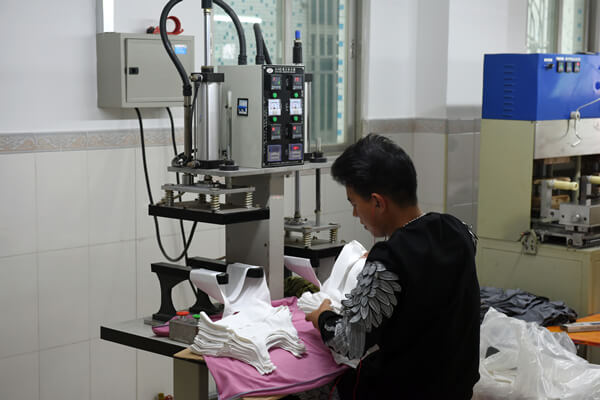
Early in my career, my first impression of bonding technology was one of amazement. We were developing products for a high-end lingerie brand, and the client specifically requested panties that would be completely invisible under tight skirts. Traditional technology couldn't achieve this goal, and the results from bonding technology were stunning—the edges of the underwear almost merged with the skin, leaving absolutely no visible lines under tight clothing.
El núcleo de la ropa interior unida se encuentra en su única tecnología de unión adhesiva activada por calor. A diferencia del pegamento ordinario, este adhesivo especial se derrite a altas temperaturas y penetra en las fibras de tela, formando un enlace fuerte pero suave cuando se enfría. Esto crea un método de costura que mantiene tanto la fuerza estructural como la suavidad de la tela.
Proceso de producción de ropa interior unida
| Etapa de producción | Descripción del proceso |
|---|---|
| Selección de materiales | Elegir telas adecuadas para la unión de calor, típicamente mezclas de nylon-elastane |
| Corte | El corte preciso de los componentes de la tela, que requiere una mayor precisión |
| Preparación de cinta activada por calor | Seleccionar el ancho apropiado y la resistencia de la cinta activada por calor basada en el tipo de costura |
| Vínculo con calor | Uso de máquinas de prensa calor |
| Tratamiento de borde | Uso de corte láser o equipo especial para tratar bordes, asegurando un efecto invisible |
| Prueba de calidad | Prueba de fuerza de unión y capacidad de recuperación elástica |
Las opciones de materiales para la ropa interior unida son más extensas que para la ropa interior sin costura, que es una de sus ventajas significativas. Desde mezclas livianas de nylon hasta encaje de alta gama, prácticamente cualquier material que pueda soportar el proceso de tratamiento térmico puede usarse con la tecnología de unión. Esto permite que las marcas ofrezcan líneas de productos más diversificadas al tiempo que mantienen características invisibles. Al tener, hemos desarrollado con éxito ropa interior vinculada en varios materiales, incluidos encajes, satén estiramiento y microfibra para satisfacer las diferentes necesidades de los consumidores.
Las áreas de aplicación para la ropa interior vinculada continúan expandiéndose. Inicialmente, esta tecnología se utilizó principalmente para bragas de alta gama, pero ahora se ha extendido a los sujetadores deportivos, la fajas y los trajes de baño. Especialmente durante el ejercicio de alta intensidad, la característica invisible de la tecnología de unión puede reducir efectivamente la fricción e irritación, mejorando el rendimiento deportivo. Nuestra experiencia trabajando con una conocida marca de ropa de fitness demuestra que los sujetadores deportivos unidos pueden convertirse en productos estrella para las marcas. A pesar de los costos más altos, los consumidores están dispuestos a pagar una prima por sus ventajas únicas.
Análisis de costos y valor: ¿Qué tecnología se adapta a su presupuesto?
In underwear procurement decisions, cost is often the primary consideration. However, focusing solely on unit price while ignoring overall value can lead to incorrect strategic decisions and lost market opportunities.
Seamless underwear typically costs 15-30% less than bonded underwear, mainly due to its highly automated production process and lower labor requirements. In contrast, bonded underwear requires more specialized technicians and equipment, but its high added value and differentiation advantages may bring higher retail prices and profit margins.

Years ago, when working with a mid-range lingerie brand, they initially chose all seamless products based on cost. However, they noticed competitors created more diverse product lines by mixing seamless and bonded technologies. On our advice, they tried launching a small bonded underwear series as a premium line. Although costs increased by about 25%, retail prices were raised by 40%, ultimately improving overall profit margins.
Understanding the cost structure of both technologies is essential for developing informed procurement strategies. The cost advantage of seamless underwear mainly comes from production efficiency: a high-end circular machine can produce hundreds of underwear bodies per day, significantly reducing labor costs. In contrast, bonded underwear requires skilled technicians operating heat bonding equipment and demands more precise cutting and processing.
Comparación de estructura de costos
| Cost Factor | Ropa interior sin costuras | Ropa interior unida |
|---|---|---|
| Equipment Investment | High (circular knitting machines cost $80,000-150,000) | Medium (heat press machines cost $10,000-30,000) |
| Labor Costs | Low (high automation level) | High (requires skilled technicians) |
| Material Costs | Medium (specific yarns required) | Medium to High (plus adhesive materials) |
| Production Efficiency | High (fast production cycle) | Bajo a medio (más procesamiento manual) |
| Cantidad mínima de pedido | Más alto (típicamente más de 1,000 por estilo/color) | Más bajo (puede ser tan bajo como 300 piezas) |
Más allá de los costos de producción directos, las marcas deben considerar el valor de posicionamiento del mercado de cada tecnología. Al tener, hemos observado que la ropa interior vinculada ordena una prima promedio de precio minorista de 30-50% sobre productos sin costura comparables. Esto es particularmente evidente en los mercados deportivos de lujo y premium, donde los consumidores priorizan el rendimiento y la estética sobre el precio.
El factor de cantidad mínima de orden (MOQ) también merece consideración. Si bien la tecnología sin costura ofrece una mejor economía unitaria, generalmente requiere MOQ más altos debido a los costos de configuración de la máquina y los mínimos de hilo. Para las marcas emergentes o para aquellos que prueban nuevos diseños, la tecnología unida a veces puede ser más accesible a pesar del costo unitario más alto, ya que permite realizar ejecuciones de producción más pequeñas.
Diferencias de calidad y rendimiento: ¿Qué tecnología ofrece mejores productos?
Las consideraciones de calidad a menudo superan el costo en la estrategia de marca a largo plazo. Elegir la tecnología incorrecta puede conducir a altas tasas de retorno, daños a la reputación de la marca y perder la lealtad del cliente, los costos superan mucho cualquier ahorro de producción.
Seamless underwear generally offers superior comfort and durability for everyday wear, with excellent stretch recovery and breathability. Bonded underwear excels in creating smooth silhouettes under clothing and can offer enhanced support in structured garments like shapewear. Each technology serves different performance needs and target consumers.
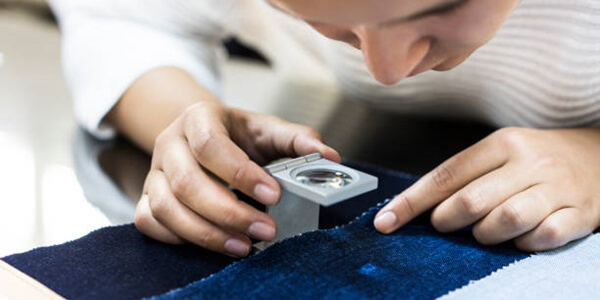
Recuerdo haber trabajado con una marca de ropa atlética que inicialmente insistió en la tecnología unida para toda su línea de sujetadores deportivos basados únicamente en su posicionamiento de mercado premium. Después de extensas pruebas de desgaste, descubrimos que, si bien la construcción unida se destacó para las actividades de impacto de la luz donde la invisibilidad era primordial, la construcción perfecta proporcionó un mejor soporte y gestión de humedad para actividades de alto impacto. Finalmente desarrollamos una línea híbrida que utilizó cada tecnología donde mejoró.
La evaluación de calidad para la ropa interior debe considerar tanto la apariencia inmediata como el rendimiento a largo plazo. Al tener, realizamos amplias pruebas más allá de los estándares de la industria, incluidas las pruebas de durabilidad de 30 lavados para simular el ciclo de vida completo de un producto. Esta prueba ha revelado distintas diferencias de rendimiento entre las tecnologías.
Comparación de rendimiento por aplicación
| Solicitud | Ventaja perfecta | Ventaja unida |
|---|---|---|
| Ropa interior diaria | Mejor transpirabilidad, durabilidad rentable | No hay líneas visibles debajo de la ropa, silueta más suave |
| Bras deportivos de alto impacto | Mejor apoyo, reducción de humedad, durabilidad | Rozado reducido, estética aerodinámica |
| fajas | Compresión graduada, mejor transpirabilidad | Transiciones más suaves, invisibles bajo ropa |
| Lencería de lujo | Comodidad para el uso extendido, mejor valor | Estética premium, compatibilidad con telas delicadas |
| Ropa interior térmica | Aislamiento superior, mejor para varias fibras | Costuras más planas, mejor capas debajo de la ropa |
Un aspecto de calidad crítica a menudo pasado por alto es la durabilidad de lavado. En nuestro laboratorio de pruebas al tener, hemos descubierto que la ropa interior perfecta generalmente mantiene mejor su forma y elasticidad después de un lavado repetido. La estructura de punto distribuye el estrés de manera más uniforme, lo que resulta en menos deformaciones con el tiempo. La ropa interior unida, al tiempo que presenta inicialmente una apariencia más suave, puede experimentar la degradación adhesiva si no está diseñada adecuadamente o si los consumidores no siguen las instrucciones de cuidado.
The comfort equation differs significantly between the technologies. Seamless underwear typically conforms better to body movements and provides more "give" durante la actividad. La ausencia de costuras voluminosas reduce la irritación, particularmente en áreas sensibles. La ropa interior unida, aunque suave a lo largo de las costuras, a veces puede sentirse más rígido y menos indulgente, aunque los avances recientes en la tecnología adhesiva están reduciendo esta brecha.
Para las marcas, estas diferencias de calidad se traducen directamente a la satisfacción del cliente y las compras repetidas. Los datos de comentarios de nuestros clientes indican que los consumidores por primera vez a menudo se sienten atraídos por la estética de la ropa interior unida, pero la lealtad a largo plazo es frecuentemente impulsada por la comodidad cotidiana de los productos sin costuras bien diseñados. La estrategia ideal a menudo implica ofrecer ambas tecnologías para satisfacer las diferentes necesidades de los clientes y las ocasiones de uso.
Tendencias del mercado y preferencias del consumidor: ¿Qué buscan los compradores?
Comprender las tendencias del mercado es esencial para las decisiones de abastecimiento de ropa interior estratégica. Las preferencias del consumidor están evolucionando rápidamente, y las marcas que anticipan estos cambios obtienen importantes ventajas competitivas.
Los datos actuales del mercado muestran un creciente interés del consumidor tanto en tecnologías sin interrupciones como en unas razones. Sin costuras, sigue siendo el líder de volumen para la ropa interior diaria, valorada por comodidad y accesibilidad. La ropa interior unida está experimentando un crecimiento porcentual más rápido, especialmente en segmentos premium y de rendimiento donde sus beneficios invisibles tienen márgenes más altos.

I recently attended a major textile innovation exhibition where underwear technology was a focal point. What struck me was the convergence of these previously separate technologies. Leading manufacturers were showcasing hybrid approaches that combined the comfort of seamless construction with bonded elements for critical areas like waistbands and leg openings. This trend suggests that the future isn't about choosing one technology over another, but strategically integrating both.
Consumer preference data reveals interesting demographic patterns. Younger consumers (18-34) show stronger preference for bonded technology, valuing its modern aesthetics and invisibility under today's fashion trends. Meanwhile, seamless technology maintains stronger loyalty among consumers aged 35+, who prioritize comfort and durability. This generational divide presents important segmentation opportunities for brands.
Proyecciones de crecimiento del mercado por segmento (2022-2027)
| Segmento de mercado | Seamless Growth | Bonded Growth |
|---|---|---|
| Ropa interior diaria | 5-7% annually | 12-15% annually |
| Athletic/Performance | 9-12% annually | 18-22% annually |
| Luxury/Premium | 3-5% annually | 10-14% annually |
| fajas | 6-8% annually | 15-18% annually |
| Sustainable/Eco | 14-18% annually | 8-10% annually |
La sostenibilidad se está convirtiendo en un factor cada vez más importante en las decisiones de compra de ropa interior. Aquí, las tecnologías presentan diferentes perfiles ambientales. La producción perfecta generalmente da como resultado menos desechos de tela ya que la prenda está tejida a la forma. Sin embargo, las fibras sintéticas comúnmente utilizadas en la producción perfecta pueden generar preocupaciones sobre el desprendimiento microplástico. La tecnología unida crea más desechos de corte, pero puede utilizar una gama más amplia de materiales sostenibles, incluidas las opciones orgánicas y recicladas.
Al tener, estamos viendo un creciente interés en versiones ecológicas de ambas tecnologías. Hemos desarrollado con éxito ropa interior sin costuras utilizando mezclas de nylon y algodón orgánico reciclados, y nuestra R&El equipo D ha calificado recientemente una nueva generación de adhesivos a base de agua para ropa interior unida que eliminan los productos químicos nocivos mientras mantienen el rendimiento. Las marcas que enfatizan la sostenibilidad deberían considerar estos avances en sus decisiones de abastecimiento.
El aumento de las marcas de ropa interior directa al consumidor (DTC) también ha influido en las preferencias tecnológicas. Estas marcas nativas digitalmente a menudo favorecen la tecnología unida para su posicionamiento premium y cualidades fotogénicas, que funcionan bien en el marketing de redes sociales. Las marcas minoristas tradicionales tienden a mantener una cartera más equilibrada, reconociendo la importancia de la perfección para las propuestas de valor cotidianas.
Estrategias de abastecimiento: ¿Cómo elegir el proveedor adecuado para cada tecnología?
Finding the right manufacturing partner is critical to your underwear line's success. Different technologies require different expertise, equipment, and quality control processes - mistakes in supplier selection can be costly and time-consuming.
For seamless underwear, prioritize suppliers with modern circular knitting machinery and strong yarn sourcing capabilities. For bonded underwear, look for technical expertise in adhesive application, precision cutting, and extensive quality testing. In both cases, proven experience with your specific product category is more valuable than general apparel manufacturing capability.
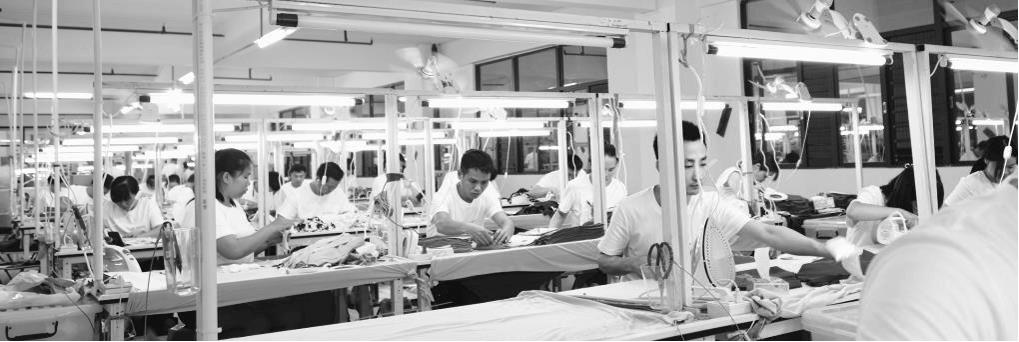
One of my most educational experiences came early in my career when I visited a factory that claimed expertise in both technologies. Their seamless operation was impressive - modern Italian machines, skilled technicians, and comprehensive testing. However, their bonded department consisted of a single heat press machine in a corner with untrained operators. The resulting products were completely unacceptable, with delamination occurring after just a few washes. This taught me that true dual-capability suppliers are rare and require careful verification.
When evaluating potential suppliers, consider these technology-specific factors:
Criterios de evaluación de proveedores
| Evaluation Factor | Seamless Supplier Indicators | Bonded Supplier Indicators |
|---|---|---|
| Key Equipment | Modern Santoni or equivalent machines, dyeing facilities | Precision heat presses, laser cutting capability |
| Experiencia técnica | Programming skill for knitting patterns, color consistency | Adhesive knowledge, precise temperature control |
| Prueba de calidad | Stretch recovery, colorfastness, dimension stability | Bond strength, wash durability, edge finish quality |
| Minimum Orders | Typically higher (1,000+ per style) | Can be lower (300-500 per style) |
| Línea de tiempo de desarrollo | Longer for initial development (4-6 weeks) | Faster prototyping possible (2-3 weeks) |
Supplier geographical location is another important consideration. Seamless production has traditionally been concentrated in certain manufacturing hubs - notably China, Italy, and Turkey - where specialized equipment and technical expertise cluster. Bonded technology, while still requiring expertise, has a somewhat broader geographical distribution. At HAVING, we've invested heavily in both technologies at our facilities in China, which gives us unique capabilities to offer integrated solutions.
The development process varies significantly between the technologies. Seamless development typically requires more upfront investment in programming and sampling, with changes being more complex to implement once production begins. Bonded development can be more iterative, allowing for adjustments later in the process. Brands should align their development timeline expectations accordingly.
For emerging brands or those making their first foray into these technologies, supplier support capabilities are particularly important. Look for manufacturers who offer design assistance, material recommendations, and market insights rather than simply executing specifications. The right partner should function as an extension of your technical team, especially when you're exploring unfamiliar technologies.
Integración estratégica: ¿Cómo equilibrar ambas tecnologías en su línea de productos?
The most successful underwear brands aren't choosing between seamless and bonded technologies - they're strategically integrating both to create comprehensive product offerings that meet diverse consumer needs.
Rather than viewing seamless and bonded as competing technologies, consider them complementary tools in your product development arsenal. Seamless can serve as your everyday, accessible price point products with comfort advantages, while bonded can elevate your premium offerings where invisible aesthetics command higher margins.

I've worked with numerous brands on portfolio strategy, and the most successful approaches involve thoughtful segmentation. One lingerie brand we partner with maintains a "good-better-best" architecture: their mass-market retailers receive primarily seamless products at competitive price points, their own stores and department stores get a mix with bonded elements incorporated into mid-tier products, and their luxury line for high-end boutiques features extensively bonded construction with premium materials.
This strategic segmentation allows brands to serve different retail channels and consumer segments while maintaining clear price-value relationships. It also creates natural upgrade paths for consumers as their preferences and purchasing power evolve.
Marco de integración estratégica
| Brand Position | Entry-Level Products | Productos principales | Productos premium |
|---|---|---|---|
| Mass Market | Basic seamless | Patterned seamless | Hybrid with bonded elements |
| Mid-Range | Advanced seamless | Hybrid construction | Simple bonded designs |
| De primera calidad | Premium seamless | Advanced bonded | Luxury fully bonded |
| Actuación | Basic seamless | Technical seamless | Bonded performance |
Hybrid products represent an exciting frontier in underwear innovation. These designs combine the strengths of both technologies - for example, using seamless construction for the main body where comfort is paramount, with bonded edges at waistbands and leg openings to eliminate visible lines. At HAVING, we've developed patented processes to combine these technologies effectively without compromising durability or comfort.
El ciclo de planificación estacional presenta otra oportunidad para la integración estratégica. Muchas marcas con las que trabajamos mantienen un núcleo consistente de elementos esenciales sin costuras durante todo el año, mientras utilizan tecnología vinculada para colecciones de moda estacionales donde los márgenes más altos pueden absorber mejor los costos de desarrollo de nuevos colores y diseños. Este enfoque optimiza tanto la eficiencia de producción como la emoción del mercado.
La estrategia de canal también debe informar su combinación de tecnología. Los canales directos al consumidor pueden comunicar de manera más efectiva los beneficios premium de la tecnología unida y justificar los puntos de precio más altos. Los canales al por mayor, particularmente los minoristas masivos, generalmente favorecen la ecuación de valor de productos sin problemas. Sin embargo, la educación puede ayudar a cerrar esta brecha: hemos ayudado a varias marcas a desarrollar pantallas en la tienda que demuestren efectivamente los beneficios invisibles de los productos vinculados.
Cuando planifique su línea de ropa interior, considere comenzar con una base central de estilos comprobados de manera perfecta al introducir las opciones vinculadas estratégicamente. Realice un seguimiento de las métricas de rendimiento cuidadosamente, no solo el volumen de ventas sino también los márgenes, las tarifas de devolución y los comentarios de los clientes. Estos datos guiarán su equilibrio tecnológico en evolución con el tiempo. Al tener, nos asociamos con las marcas para analizar estos datos de rendimiento y refinar continuamente la combinación de tecnología para maximizar el éxito general del programa.
Innovaciones futuras: ¿Qué sigue en tecnología de ropa interior?
El panorama de fabricación de ropa interior continúa evolucionando rápidamente, con nuevas innovaciones que surgen que difuminarán aún más las líneas entre las tecnologías tradicionales. Las marcas que anticipan estos cambios pueden obtener ventajas competitivas significativas.
Las innovaciones emergentes incluyen adhesivos biológicos para ropa interior vinculada más sostenible, avances de tejido digital que mejoran las capacidades perfectas y las tecnologías híbridas que combinan múltiples métodos de construcción en prendas individuales. Los textiles inteligentes y la personalización también están preparados para transformar la categoría de ropa interior en los próximos años.
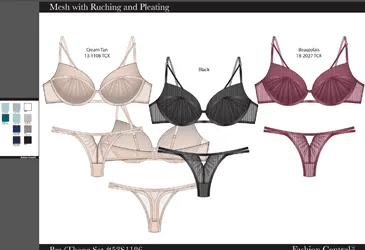
En nuestro laboratorio de innovación al tener, estamos constantemente probando nuevos enfoques. Recientemente, hemos estado experimentando con hilos programables que permiten la ropa interior perfecta para proporcionar diferentes niveles de compresión en diferentes zonas sin cambiar la construcción general. Esta tecnología podría revolucionar ShapeWear creando un soporte invisible que se une directamente a la ropa interior cotidiana.
Sustainability innovations are particularly exciting. The traditional adhesives used in bonded underwear have often contained chemicals of concern, but a new generation of water-based, biodegradable adhesives is changing this. Similarly, new recycled and bio-based yarns are enhancing the environmental profile of seamless underwear while maintaining performance.
Tendencias tecnológicas emergentes
| Innovation Area | Technology Development | Market Impact |
|---|---|---|
| Materiales sostenibles | Bio-based adhesives, recycled nylon yarns | Enhanced eco-credentials without performance compromise |
| Digital Knitting | Advanced programming for complex zone engineering | More sophisticated seamless designs with targeted support |
| Hybrid Construction | Combined technologies in single garments | Best-of-both-worlds performance without compromises |
| Textiles inteligentes | Integrated sensors and responsive materials | Monitoreo de salud y características de rendimiento adaptativo |
| Fabricación a pedido | Producción rápida sin costura con un tiempo de configuración mínimo | Mínimos reducidos, respuesta de mercado más rápida, menos inventario |
La integración de las capacidades textiles inteligentes es particularmente intrigante para la ropa interior de rendimiento. Estamos viendo aplicaciones tempranas de textiles sensibles a la humedad que pueden adaptar sus propiedades en función de los niveles de sudor, mejorando la comodidad durante las actividades deportivas. Mirando más adelante, la incorporación de sensores flexibles en ropa íntima presenta oportunidades para el monitoreo de la salud en una categoría de prendas que mantiene un contacto consistente en la piel.
Manufacturing innovations are also changing the business model for underwear production. Newer generations of seamless machines offer significantly faster setup times, potentially reducing minimum order quantities and enabling more responsive production. This could eventually lead to more on-demand manufacturing approaches, reducing inventory risk for brands and opening opportunities for greater personalization.
The future likely belongs to brands that remain technology-agnostic and adaptable. Rather than committing exclusively to either seamless or bonded technologies, forward-thinking companies are building flexible supply chains that can leverage the best emerging innovations regardless of their technical categorization. At HAVING, we're investing in this flexible approach, maintaining expertise across the full spectrum of underwear construction technologies.
Conclusión
Choosing between seamless and bonded underwear technology isn't an either-or decision but a strategic opportunity to diversify your product offerings and target different consumer segments. By understanding the distinct advantages of each technology - seamless for comfort and value, bonded for invisibility and premium positioning - brands can develop balanced portfolios that maximize both market reach and profit margins.
Obtenga una cotización gratuita para sus proyectos de ropa interior
